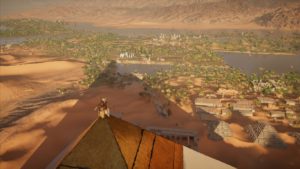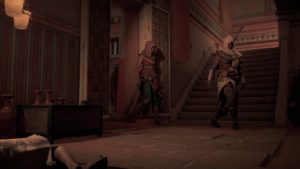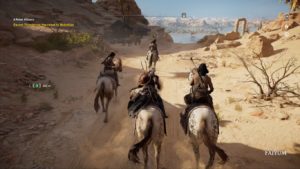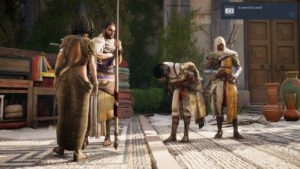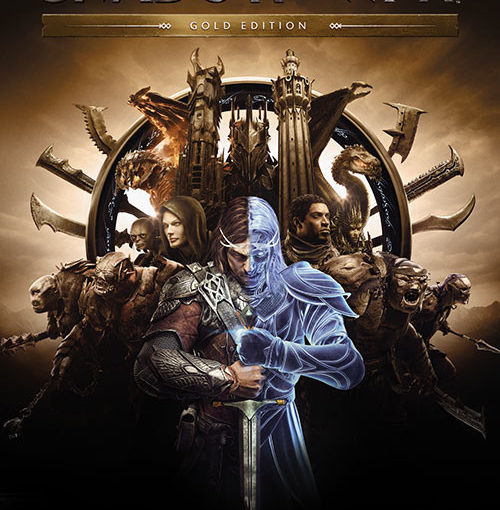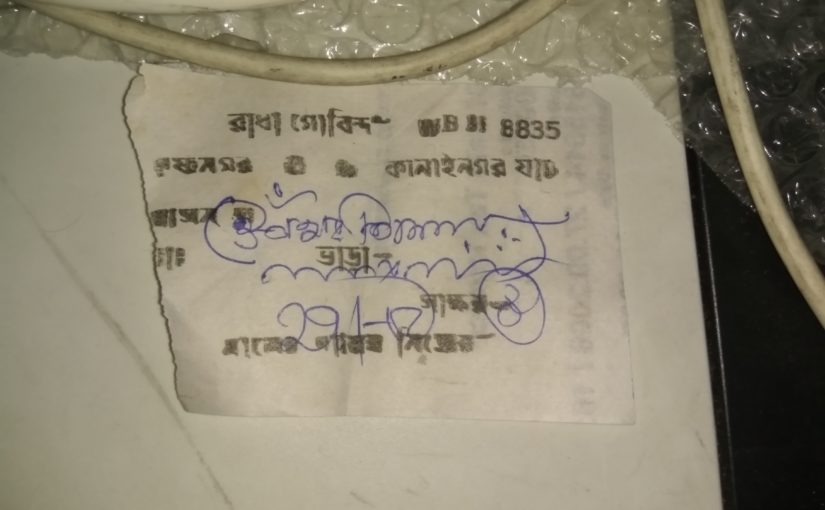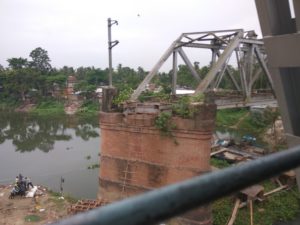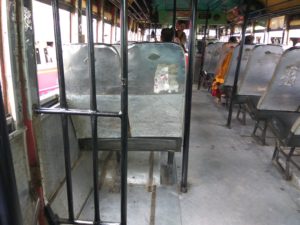About a year and half ago, I found myself sitting in the CC-1 (Chair Car) coach of the Hazarduari Express, heading towards Krishnanagar. I was accompanying the chief guest and main speaker of a workshop to be held at our college. The man in question, despite being older than my father and with years of academic and administrative experience behind him, proved to be quite the chatting companion. As the train gathered pace after Barrackpore, our conversation moved to the then just-concluded movement in Jadavpur University. Knowing him to be a man of the “administration”, I ventured to point out that the entire movement had hardly helped the academic ambiance of the University, with classes being disrupted and students spending more time protesting than actually studying.
I’d expected a mild commentary on how student politics gone to seed was reaping a stormy harvest. Instead, I received a wry smile. He said, “Aritra, do you really believe this to be a students’ movement ? Would it have succeeded if it had ?” Now let’s rewind a bit. Anyone familiar with the history of the movement ostensibly sparked by the molestation of a girl student in a boys’ hostel would know that the students had been at the forefront from the very beginning. It had spawned a larger protest that led to street rallies attended by students (especially girl students) from the majority of South Kolkata colleges. Petitions, signature campaigns, sit-ins and even hunger strikes had become the order of the day. Eventually, the V-C had been “ousted”, leading to a “victory” for the movement.
The reason I put the words “ousted” and “victory” in quotes is because of what he explained thereafter. I forget the exact words, but the crux of his argument went thus – a students’ movement would never have succeeded without the connivance of the faculty. The faculty, in fact, had instigated the movement because the V-C had chosen to remove a few HODs and Directors from their positions. These HODs and Directors held on to their positions in order to remain at the top of patron-client networks involving other faculty, students and research scholars. By trying to break this quid pro quo, the V-C had stirred a hornet’s nest. The result was that a movement demanding security for female students had turned into a “revolution” that achieved the V-C’s resignation, and nothing more. The girl was forgotten the moment the interested parties were sure their positions were secure from what they saw as administrative caprice.
It took me the remainder of the train ride to digest what I’d learnt. There’s a realist political theorist in all of us, and mine was screaming “Duh! There goes your ideology and high esteem of the students.” The voice was right of course, since without some amount of administrative support, the movement would never have succeeded. If every rule against students is imposed rigidly, it becomes a lot harder to effect a movement of the scale and intensity seen in Jadavpur.
But the wisdom I received during that train ride has been tempered with many events since. Most notable among them have been the movement in Presidency against capricious fee hikes and attendance rules, and the recently concluded one in Medical College against refusal of new boarding facilities to senior male students. Note that in each case, the students received far less support from their teachers than their peers in Jadavpur.
So what does it take to make a movement succeed ? Is it necessary to have the support of at least a section of the faculty, who will overlook bunked classes and missed deadlines at the least, and major conflicts with the police at worst, for their own vested interests ? Marxist historians talk of autonomy of the subaltern space, which has its own language. Students’ movements are quasi-subaltern, since they use the language of the ruling class but invert it without becoming merely a bourgeois reaction. They possess their own autonomy, created in defiance to and not always as simply a reaction to, administrative fiat. Yet they are at the core of the structure instead of being in the periphery like the true subaltern, and hence represent a fleeting autonomy that cannot truly count on any foundations of class or social structure to ensure its survival.
In my own student days, far before I had become aware of such complex terminologies, this was made patent to me in the way seniors reacted to ongoing movements, and passouts simply looked the other way. Some continued to voice support, but made it clear that as employees or scholars, their priorities were different and they would not find it easy to openly support the student fraternity, even if in their heart of hearts, they wished to. Hence, the autonomy remained with the student as long as she was the student, theoretically detached from the capitalist system through the cobwebs of state sponsored education, and she gave it up in exchange for a social role involving productivity within the capitalist system. Naturally, the affinities of each batch of students varied, and so “students’ movements” tended to vary year by year, semester by semester, even month by month.
But if we teachers’ selfish support is to be considered a necessary condition for the success of a students’ movement, is the student truly autonomous in any domain ? Is she not simply a pawn in the patron-client relationships that characterize all of academia, a puppet to be pulled by a string as and when the professor desires ? In other words, isn’t the space she occupies hegemonized by the professors, the equivalent of the bourgeois leaders in the subaltern schemata ?
I’ve pondered over this question for the better part of the year, and to some extent, I surrendered to the lack of student autonomy. It is inevitable since students are after all defined by their position as recipients of education. If they risk being stripped of their position, they risk losing their social role and status. Professors are vital to the retention and validation of this social role, and hence, a separate tribal autonomy can never exist since the student was neither autonomous to begin with nor was she able to carve out any space that by definition would be beyond the domain of a recipient of education, because the moment she did so, she ceased being a student.
But students still do protest, and they still do succeed. And when they do, the levels of teacher support varies considerably. Even intellectuals, otherwise so vocal on issues of national politics, turn taciturn and make noises possessing less coherence than horns in a traffic jam. So what makes them succeed ? What I’ve concluded is that, just as the actors themselves are important, so is the structure.
This structure is the university. You’d have noticed that the nature of the movements varies considerably across universities. Whereas the most successful student movement in the University of Calcutta centered on simply getting more marks, the movements in unitary universities such as Presidency, Jadavpur or JNU have taken on more radical and indeed more intellectual dimensions. From questioning the state to the failure of the administration and social justice mechanisms, they have raised fundamental questions that have more often than not resulted in deep discomfiture for the authorities themselves. These authorities, inevitably, have had to related to a state seen as “the other” by the students, been pushed into a tight moral corner and then have had to capitulate before courts or prolonged hunger strikes. In essence, as in results, you feel the protests of unitary universities have been markedly different from those of affiliating universities and ordinary colleges (Medical College itself is an exception, though one with a fair amount of autonomy itself).
How do I draw this linkage ? To begin with, let us look at revolutions in the classical sense of the term. They are political events, essentially linked with homogenous populations with a heightened sense of solidarity based on shared culture and language, and against a single focus, a single “other”. In other words, both the “for” and “against” attained a degree of unity, despite their internal contradictions.
I’d argue that there is a parallel with unitary universities. Unitary universities have a single and concentrated focus of power – the V-C. He, along with the Deans and Registrar, are in far greater control of the university than their counterparts in affiliating universities, where teacher unions, autonomous colleges and institutes all have their own power loci. In other words, it is far easier to influence the V-C of a unitary university because he is limited within the university itself and cannot draw upon legitimate support from outside the campus itself. (Legitimate being the key word here, since the state support is by definition illegitimate.)
On the other hand, the student body studies within one (or at most two campuses) and is therefore able to follow a single set of leaders, ideals, unions, and campus modalities. Over time, a certain homogeneity of culture emerges, which flattens inequalities on one hand and raises expectations of social justice on the other. This coalescing of what would otherwise have been different colleges and their own departments, leads to a far greater cohesion among students as far as actions are concerned. The knowledge that their “other” is a simple target (rather than a complex and far-flung bureaucracy with multiple centers of power and stakeholders) further cements this cohesion.
Thirdly, there is a degree of isolation that these universities can afford. This is initially created by the faculty to shield themselves from the intrusive and colonizing tendencies of the state. But over time, it creates an environment that feels sui generis even when it really isn’t. This creates a belief that the unitary university is a special place, and its ideals are indeed out of the ordinary. This sense of specialness is critical to the mobilizing of students who would otherwise have been mute spectators or indifferent observers. This sense of patriotism towards the institution, whether justified by the history of it or not, further fuels solidarity among the students and fires their imagination. Under the right leadership, this sense of patriotism becomes a clarion call to maintain what was, retain what is good and remove the ever-evil state power from infringing upon the former two.
Hence, like the classic nationalist movements, there are 3 main ingredients – a single source of power that can be targeted within the realm, a unified opposition (temporarily, I know I know) and a structure which prides itself on its uniqueness and to a degree, separation from other powers.
Now why can’t ordinary colleges, or affiliating universities, claim the same characteristics ? For starters, the centre of power is very diffuse. Take any affiliating university, and you will find a veritable cobweb of officials, many of whom stay in different campuses and are affiliated to different Schools. Secondly, the teaching fraternity itself, including the part that is in power, is very large and internally divided. It is almost impossible to take on such a heterogenous group, especially since they all belong to different colleges or schools, and may not interact with each other at all.
The students, on the other hand, have little unity beyond what is provided by the umbrella students’ body of the ruling party. These students are more likely to look to their own General Secretary for help than any larger organization. Given that the dynamics differ widely from college to college, unity needed for pressure tactics to work are simply not present. You could argue that the clash over marks in CU was an exception. It was, but it only showed that the students would coalesce around what mattered the most to them (marks from exams they didn’t give well), and nothing else.
Thirdly, affiliating colleges are deeply embedded in the fabric of politics of the state and the country. Since the ruling party basically controls the student unions and has a large section of supporters among the teachers as well, the sense of isolation is simply not present, even if we find vestiges of pride in some areas.
Now let us juxtapose the question of teacher pressure on these two differing scenarios. In unitary universities, entrance tests and their modalities are jealously guarded in the name of quality. Quality there may or may not be, but it definitely ensures that the students who come in have a decent amount of knowledge and perhaps a slight ideological bent of mind as well. This ensures that they can easily become part of the “campus politics”, which as my companion suggested, could simply be strings being pulled by one section of teachers against another. Hence, when a section uses this campus politics to its advantage – or straight up instigates it – the students have the necessary linkages, ideology and feeling of the need to stick together, to maintain a united front. This front mobilizes in favour of the faculty concerned, and the teachers look on benevolently as their ends are met by their foot soldiers.
But what if the teachers don’t support them ? In these cases, I’d argue, the student still possesses the linkages between themselves (community), ideology (language) and fellow-feeling that is necessary to maintain a space of quasi-autonomy within the power structures of the university. It is true that a section of students would bow to pressure (applied through threats of poor marking, attendance troubles, etc.) to accede and withdraw. But even if this segment is colonized and rendered inert by the colonizing power (the faculty and the administration) the remainder continue their struggle. Eventually, they do attract enough support to force a section of the “intellectuals” to support them, thereby making it harder for the faculty to maintain adverse pressure. Eventually, the “authority” capitulates and the movement is withdrawn.
In ordinary colleges and affiliating universities, however, entrance exams are typically not held or are simple MCQ affairs. These bring in students who have simply obtained good marks or managed to mug up enough to clear the exam. They seldom possess the knowledge required for clear political views, and come from a very diverse set of backgrounds. It is never easy for faculty to mould such a diverse grouping into anything usable by themselves. Even when they do try, they find themselves to be possessing little actual power, since the university and the state monitor and control everything to a very high degree. The result is that the students develop a far more transactional relationship, preferring to simply keep their heads low, get the degrees and then search for jobs. Anything beyond this is difficult to conceive unless they threaten the degrees themselves (eg. the large number of people failing in General subjects as a result of changes in rules).
Hence, when the teachers want to run a movement (assuming they’re united, which they never are), they find the students’ union to be an unreliable vehicle of their opinion. Students simply know the teachers don’t have the power to enforce anything that might harm them, and don’t care enough about either the university or any burning issues to put themselves on the line. The result is that college and affiliating university teachers have far less influence, even if they wanted to exert it.
The reverse is also true. If the students sought to start a movement and achieved union backing, there is very little a teacher, a principal or a V-C can do beyond calling up the minister and asking for help. For movements with political backing, the movement might die out with a minister’s whip, but if it’s autonomous, it’d take longer (though these movements are very rare). Never would you hear of a police charge or suchlike in a college or affiliating university on issues beyond anything related to marks or campus fighting (not politics in the sense of discussions, but actual physical fighting). This is because once the head phones the required higher authority, diktats ensure most movements (which are led by this or that party) die out. What remain gradually take on other forms beyond the college, with the faculty remaining mute spectators.
Thus, to return to the point I’d made in the beginning – teachers’ attitudes are important and necessary for movements to quickly gain momentum and then keeping moving forward despite external and internal pressure. But teachers’ attitudes are coloured by and limited by the nature of the institution. The institution decides whether the student body is united, whether there is isolation or embeddedness, how strong the administration can be and how easy it is to assault, and what impact, if any, the teachers have on the course of events. If the structure is favourable, the movement is powerful. If it is not, the movement, regardless of where it happens, will be a flop.
Moral of the story, thus, is if you want student protests to die out, just stop the public unitary universities and prevent new ones from coming up. Problems related to student politics will solve themselves.




